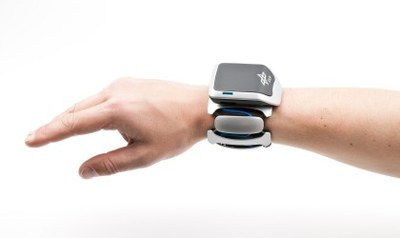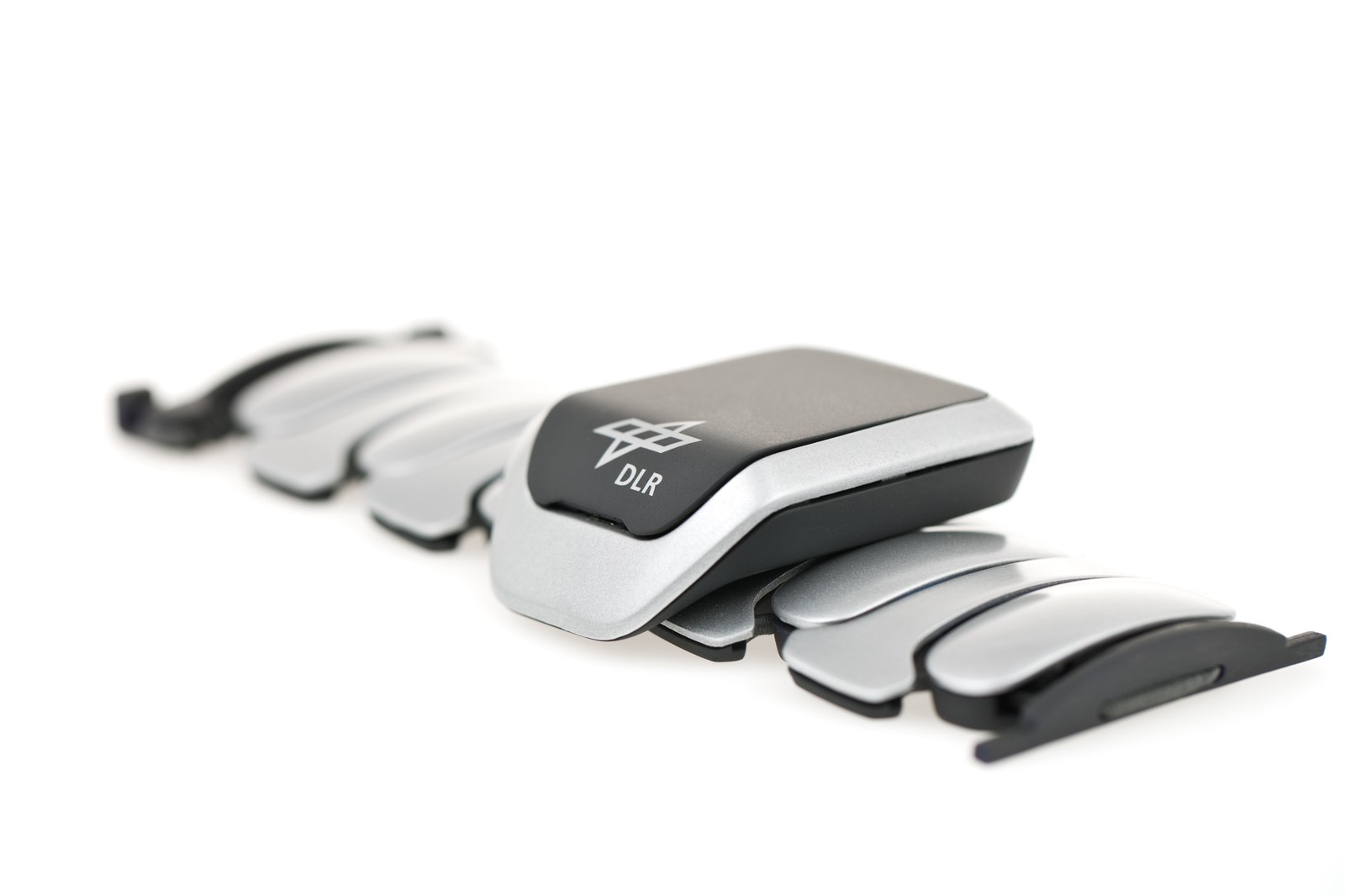VibroTac

VibroTac is a novel haptic device in the form of a bracelet that generates vibrotactile feedback to transmit various information to its user. It makes use of the haptic channel instead of the visual or auditory channel, thus it is predestined for blind or deaf persons and for the use in loud environments as well as in situations where visual and auditory channels are overcharged.
The VibroTac was presented to the public in 2010 and licensed to SENSODRIVE in 2011.
Specifications
size: | 180 x 70 x 25 mm (LxWxH) in unstrained condition |
weight: | 130 g incl. battery |
battery life: | > 1 day |
actuators: | 6 tactors (cylindrical vibration motors) |
communication: | wireless (XBee) |
special features: | • The intensity of each individual tactor can be set individually such that different stimulation patterns can be generated. • Multiple devices can be operated simultaneously to output feedback at different regions on the arm. |
System description
With six vibration segments, distributed around the arm in equal distances, VibroTac generates tactile stimuli that are separately and continuously adjustable in frequency and shape. Hence, various kinds of information such as direction, distance or collision feedback can be displayed to the user in an unobtrusive way. Due to the patented ergonomic concept, the device can be worn on a wide range of arm diameters while battery power and wireless control contribute to unrestricted movement capability and user convenience.
VibroTac can
- feed back collisions and information from Virtual Reality Simulations or Telerobotic Systems to the human
- give directional hints for navigation tasks
- guide arm movements
- direct attention e.g. for Air Traffic Control Environments
- support blind persons as a technical aid.
Ongoing research focuses on the application dependent optimization of stimuli pattern as well as on different Human Factors aspects. VibroTac has been developed at the DLR Institute of Robotics and Mechatronics and is now sold under license by SENSODRIVE.



- S. Schätzle, T. Hulin, B. Pleintinger: VibroTac S: An Electronic Assistive Device for Blind and Visually Impaired People to Avoid Collisions, International Conference on Human Systems Engineering and Design (IHSED), Okt. 2018, Reims, Frankreich
- S. Schätzle: Entwicklung eines vibrotaktilen Armbands zur vielseitigen Informationsübermittlung in Mensch-Maschine-Systemen. Dissertation, Mar. 2018, Leibniz Universität Hannover
- S. Schätzle, T. Ende, T. Wüsthoff, C. Preusche: VibroTac: An ergonomic and versatile usable vibrotactile feedback device, IEEE RO-MAN, Sep. 2010, Viareggio, Italy
- B. Weber, S. Schätzle, S., T. Hulin, C. Preusche, B. Deml: Evaluation of a vibrotactile feedback device for spatial guidance, IEEE World Haptics Conference 2011, Istanbul, Turkey
- M. Friedrich, B. Weber, S. Schätzle, H. Oberheid, C. Preusche, B. Deml: Air traffic controller assistance systems for attention direction: Comparing visual, auditory, and tactile feedback. HFES European Chapter, 2010, Leeds, UK
- B. Weber, B. Deml, M. Friedrich, S. Schätzle, H. Oberheid, C. Preusche: Vibrotaktiles Feedback zur Aufmerksamkeitslenkung bei komplexen Lotsentätigkeiten, M. Grandt & A. Bauch (Hrsg.): Innovative Interaktionstechnologien für Mensch-Maschine-Schnittstellen, DGLR 2010
- S. Schätzle, T. Hulin, C. Preusche, G. Hirzinger: Evalution of Vibro-Tactile Feedback to the Human Arm, EuroHaptics 2006, Paris, France
Awards
- DLR Innovation Award 2012
- Finalist in the WT (Wearable Technology) Innovation World Cup 2012
- Winner of the M2M Challenge (category Healthcare) 2012/2013
- Third place at the "senetics Innovation-Award" 2014 (innovative product idea in Healthcare)
- Third place at the "euRobotics Technology Transfer Award" 2015

